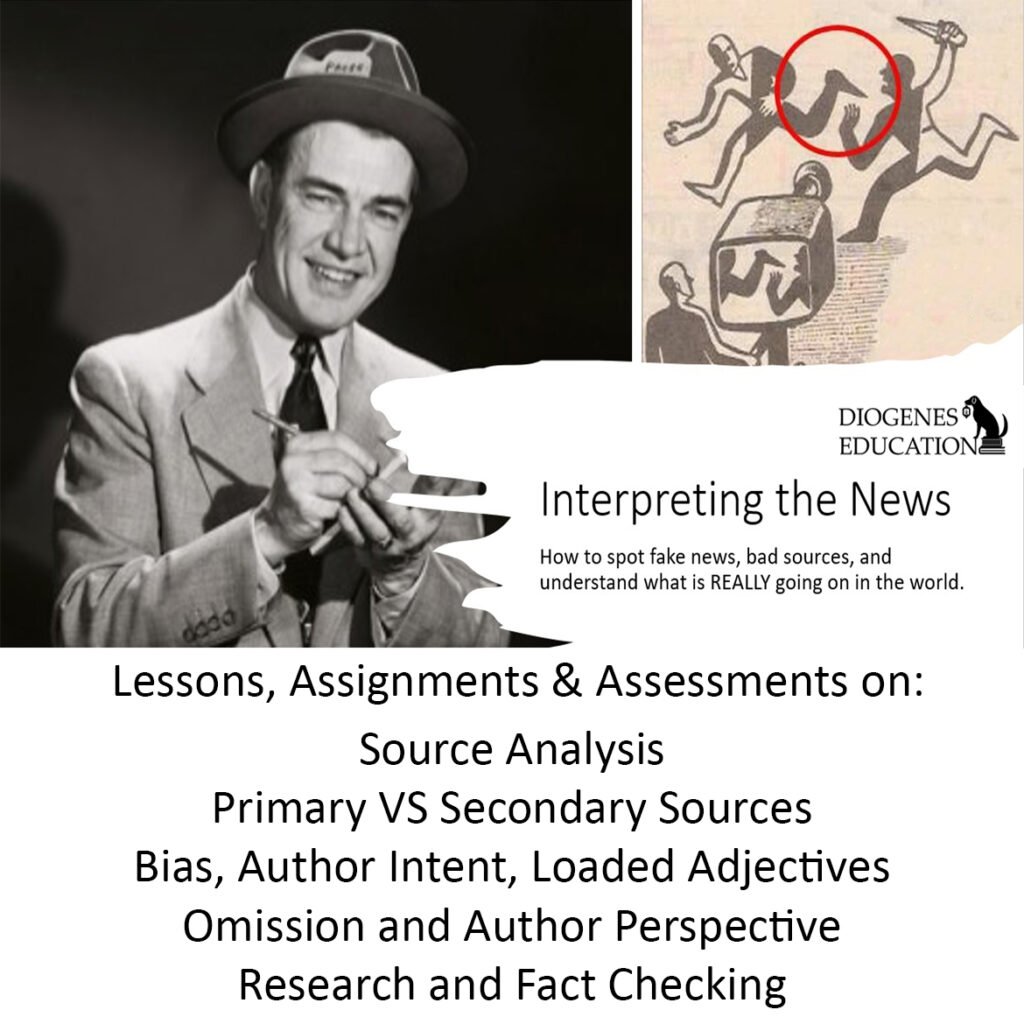

Teaching Media Literacy in an Age of Disinformation
My students loudly exclaimed the newest news from TikTok: “Bob Ross is a serial killer and his paintings show where he hid the bodies!” This was certainly “news” to me and the millions of others who watched Bob Ross paint “happy little trees” throughout the 90s on PBS. A quick search of TikTok or YouTube will reveal thousands of talking heads spreading gossip, rumors, and blatant misinformation about topics ranging from history (claims that the Roman Empire never existed), science (anti-vaxxer nonsense), pop culture (such as the slanderous story about Bob Ross), and political events. But we can’t only blame social media when news programs themselves engage in the same sort of yellow journalism. How can you help prepare students to navigate truth from fiction in a world when anyone can spread a lie and gain millions of ears? You teach them how to perform a good source analysis, how to look for bias, and how to compare multiple sources to see if “one of these things is not like the other“.
Media Literacy: Make it Relatable

Play a game of telephone as an icebreaker to demonstrate how secondary sources can result in misinformation. Then, present a “news” scenario that is relatable to the students. We adapted a school scenario proposed by the Stanford Education Group in which a school lunch fight breaks out and students have to figure out the truth. In this activity, students analyze why certain sources may be biased because they are friends with participants, other sources may be unreliable due to not having background information, while other sources could be hearing rumors from other people (secondary sources). This preps students to analyze more difficult texts in the next steps.
Ninjas vs Vikings: Fact vs Fiction

Students can then consider their own biases and incorrect facts. What does a ninja look like? What about a Viking? Most of us have a perception shaped by Hollywood more than History. We think of Ninjas wearing black costumes because that’s how they were represented in Kabuki theater (in the same way techies in a drama class wear all black). I learned this from a rather non-scholastic secondary source… so how can I trust the information? I follow the trail back to their primary source and ensure it was trustworthy (a book authored by a Doctor of Japanese military history, and another with a degree in historical performance art, so they have ethos to persuade me), and ensure the information didn’t change in a game of telephone. Have students perform the same fact checking on an interesting historical fact that would surprise them to teach the importance of fact checking and finding good sources.
Teach the Effect of Connotation and Omissions

Consider a news article describing an event that leaves “many injured” vs “dozens injured”: which sounds more severe? When you hear the word “many”, how many people do you picture? How many do you think when you hear dozens? The connotation of words can drastically change the interpretation of what’s written for the reader, even if the words are synonyms. In a good media literacy unit, students should compare multiple news sources reporting on the same event and reflect on what words are used to describe an event, if any omissions are present, and if editorializing adjectives are added that reflect a bias or point of view from the author.
Media Literacy: Interpret the News with Project Based Learning

Once students understand what to look for in terms of primary vs secondary sources, how to see bias based on the nuance of meanings regarding connotation vs denotation, and what constitutes an authoritative source, students should engage in a project-based learning activity: Students will look up multiple articles about a news event from different sources to identify the major differences in reporting and determine which story is the most correct, and be able to report on why. Students can then create their own news show and report on a major school event, reporting on it as an objective news story, as well as clearly positively or negatively biased versions. Finally, they will reflect on how using incorrect sources, loaded adjectives, and omission could change the truth even without really lying. The world out there is constantly changing the “capital T” Truth into something “truthy”, and it’s up to us to ensure students can tell the difference. How are you teaching Media Literacy in your classroom?
Teach Media Literacy With These Lessons Below
Media Literacy & Fake News: Primary & Secondary Sources, Bias, Reliable Sources
Connotation and Denotation: Euphemisms L.9-10.5a RL.9-10.4 CCRA.R.4
Ethos, Pathos, Logos: Persuasive & argument writing, rhetorical devices & appeal
Logical Fallacies, Debate, and Tools of Argumentative Essay Writing – AP English
Get a FREE SAMPLE of our lessons at our online store

